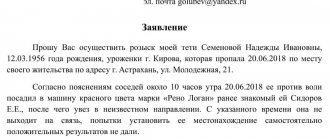1. Vandalism, that is, desecration of buildings or other structures, damage to property on public transport or in other public places, -
shall be punishable by a fine in the amount of up to forty thousand rubles, or in the amount of the wages or other income of the convicted person for a period of up to three months, or by compulsory labor for a term of up to three hundred sixty hours, or by corrective labor for a term of up to one year, or by arrest for a term of up to three months.
2. The same acts committed by a group of persons, as well as for reasons of political, ideological, racial, national or religious hatred or enmity, or for reasons of hatred or enmity against any social group, -
shall be punishable by restriction of freedom for a term of up to three years, or forced labor for a term of up to three years, or imprisonment for the same term.
- Article 213. Hooliganism
- Article 215. Violation of safety rules at nuclear energy facilities
Commentary to Art. 214 of the Criminal Code of the Russian Federation
The main object of vandalism is relations to protect public order.
An additional object is relations for the protection of public morality and property.
Subject of the crime:
1) buildings and structures. Buildings - residential buildings, buildings of enterprises and institutions, churches, shops, libraries, clinics, etc. Structures - public transport stops, sculptural compositions, payphones, advertising stands, etc.;
2) property on public transport, in other public places (subway cars, seats, handrails of public transport, benches in parks, squares, in local areas, advertising banners, property of cinemas, clubs, museums, etc.). Monuments of history and culture (Article 243 of the Criminal Code of the Russian Federation), gravestones, cemetery buildings, burial places of the dead (Article 244 of the Criminal Code of the Russian Federation), personal vehicles (Article 167 of the Criminal Code of the Russian Federation) are not subject to vandalism.
The Russian language dictionary defines vandalism as the senselessly cruel destruction of historical monuments and cultural values, barbarism. This crime was structurally separated from hooliganism; before the adoption of the Criminal Code of the Russian Federation, such actions were qualified as criminal hooliganism.
The objective side of the crime consists of committing such actions as: 1) desecration of buildings or other structures; 2) damage to property on public transport or in other public places.
The term “defilement” means disgrace, exposure to reproach, humiliation. The actions of vandals consist of applying inscriptions, drawings of cynical, obscene images to buildings and structures, staining them with sewage, etc.
“Damage” means damage, rendering unusable property in public transport, in other public places (cut up seats, bent handrails, torn out payphone tubes, burnt mailboxes, broken benches). Damage is also the application of inscriptions and drawings on buildings, fences, barriers in public places that do not offend public morals, for example graffiti, inscriptions of political or religious content. In Art. 214 of the Criminal Code of the Russian Federation does not indicate the amount of damage caused by the damage. From the standpoint of the theory of criminal law, this means that this circumstance does not affect qualifications. At the same time, if there are signs of a clearly minor act, as defined in Part 2 of Art. 14 of the Criminal Code of the Russian Federation, it is necessary to state the absence of this crime.
When committing such actions in places that are not public, for example, destroying the fence of a country house, drawing drawings on the veranda of a private cottage, the actions are qualified if there is evidence of significant damage under Art. 167 of the Criminal Code of the Russian Federation.
The corpus delicti is formal, the act is completed from the moment of desecration of property, its damage.
The subjective side of the crime is characterized by direct intent. The motive for the action is not specified in the disposition of the article, but it can only be hooliganism. In some cases, only a motive allows one to distinguish vandalism from crimes against property. For example, the culprit tore out a seat in a bus. With hooligan motives, actions form part of vandalism, with mercenary motives - theft of someone else's property.
The general subject of the crime is a sane person who has reached fourteen years of age.
Part 2 of Art. 214 of the Criminal Code of the Russian Federation establishes stricter criminal liability for vandalism committed by a group of persons (Part 1 of Article 35 of the Criminal Code of the Russian Federation - a group of persons without prior conspiracy), as well as for reasons of political, ideological, racial, national or religious hatred or enmity, or for reasons hatred or hostility towards any social group. It should be noted that vandalism committed with other forms of complicity should be qualified under Part 1 of Art. 214 of the Criminal Code of the Russian Federation, which, in our opinion, will not correspond to a fair solution to the issue of criminal liability.
Vandalism committed for reasons of political, ideological, racial, national or religious hatred or enmity, or for reasons of hatred or enmity against any social group, should be distinguished from hooliganism committed for the same reasons. Vandalism not only violates public order, but also causes damage to property through desecration of buildings and other structures, damage to property in transport or other public places. In cases where, along with vandalism (Article 214 of the Criminal Code of the Russian Federation), a person commits hooliganism, liability for which is provided for in Art. 213 of the Criminal Code of the Russian Federation, the act should be qualified according to the totality of the named articles of the Criminal Code of the Russian Federation.
———————————
See: paragraph 15 of the Resolution of the Plenum of the Supreme Court of the Russian Federation of November 15, 2007 N 45 “On judicial practice in criminal cases of hooliganism and other crimes committed out of hooligan motives” // Bulletin of the Supreme Court of the Russian Federation. 2008. N 1.
Hooliganism and vandalism
Many people consider these terms to be synonymous.
Meanwhile, each of them characterizes a certain behavior that has its own specific features. Vandals do not always act with the intention of insulting someone or expressing protest to society. The bully’s motives, in turn, are exactly that. He commits his actions out of a desire to go against society. He violates generally accepted norms, law and order, demonstratively insults or expresses his disdain for the foundations. The most striking example is the fans. They attack people, destroy, damage or destroy public or private property.
Hooliganism and vandalism are united by the fact that both disrupt order. In the first case, illegal actions are directed primarily at other people. Vandalism mainly concerns property.
One of the striking differences between these acts is the form of their commission. Vandals, as a rule, act hidden. Hooligan actions, in turn, are committed openly - a person demonstratively shows disdain for other people or rules of conduct.
Judicial practice under Article 214 of the Criminal Code of the Russian Federation
Appeal ruling of the Judicial Collegium for Criminal Cases of the Supreme Court of the Russian Federation dated 03/06/2019 N 5-APU19-16
to the competent authorities of the Republic of Belarus to bring him to criminal liability under Part 2 of Art. 205 and part 1 of Art. 214 of the Criminal Code of the Republic of Belarus. After hearing the report of judge Shmotikova S.A., the speech of Rylev A.V. and lawyer S.A. Khokhlov, who supported the arguments of the complaint, as well as the opinion of the prosecutor of the General Prosecutor's Office of the Russian Federation L.V. Shchukina. on leaving the decision unchanged, Judicial Collegium
Resolution of the Presidium of the Supreme Court of the Russian Federation dated March 6, 2019 N 186-P18
Chernova Natalya Yurievna, ... was detained on December 14, 2004 in accordance with Art. Art. 91, 92 of the Code of Criminal Procedure of the Russian Federation on suspicion of committing crimes under Part 2 of Art. 167, art. 214, art. 278 of the Criminal Code of the Russian Federation. By the decision of the judge of the Khamovnichesky District Court of Moscow dated December 17, 2004, Chernova N.Yu. a preventive measure in the form of detention was chosen.
Appeal ruling of the Judicial Collegium for Criminal Cases of the Supreme Court of the Russian Federation dated March 26, 2019 N 51-APU19-5
Convicted under paragraph “g” of Part 2 of Art. 105 of the Criminal Code of the Russian Federation to 15 years in prison with restriction of freedom for 2 years, under Part 2 of Art. 214 of the Criminal Code of the Russian Federation to 1 year of restriction of freedom. Based on Part 3 of Art. The Criminal Code of the Russian Federation for the totality of crimes by partial addition of punishments finally imposed 15 years and 2 months of imprisonment with restriction of freedom for 2 years with the main sentence being served in a high-security correctional colony.
Appeal ruling of the Judicial Collegium for Criminal Cases of the Supreme Court of the Russian Federation dated October 22, 2019 N 5-APU19-74
examined in open court the material on the appeal of lawyer A.A. Baranov, filed in defense of the interests of V.V. Salamatin, against the decision of the Moscow City Court dated August 23, 2022, which recognized the legal and justified resolution of the Deputy Prosecutor General of the Russian Federation dated 11 July 2022 on extradition to the competent authorities of the Republic of Belarus for criminal prosecution under Part 2 of Art. 209, part 1, 2 art. 214 of the Criminal Code of the Republic of Belarus
Appeal ruling of the Judicial Collegium for Criminal Cases of the Supreme Court of the Russian Federation dated July 18, 2018 N 5-APU18-24
By the resolution of the Deputy Prosecutor General of the Russian Federation dated April 11, 2022, the request of the General Prosecutor's Office of the Republic of Belarus to extradite Krivulets for prosecution for crimes under Part 1 of Art. 214 and part 2 of Art. 205 of the Criminal Code of the Republic of Belarus.
Difference from other crimes
The composition of the acts under consideration differs from other attacks. They are worth considering in more detail.
Difference from hooliganism
Hooliganism is understood as a violation of the order established in society. This manifests itself in a rude form, demonstratively. If we talk about vandals, they often act at night so that the encroachment is secret. Both compositions imply that the perpetrators pit themselves against the public. This can be expressed in a challenge to traditions, way of life and society as a whole.
The differences are that:
- Article 213 of the Criminal Code is open in nature;
- vandalism – does not attract public attention, but damage to property is necessarily caused.
It is worth paying attention to the fact that the severity of the harm caused does not affect qualifications. . Difference from property damage
Difference from property damage
Criminal law provides for penalties in situations where a person damages property. A person performs the action in question in relation to certain property belonging to a particular person. The item is personal property. When compared with Article 214 of the Criminal Code, the main difference is that the perpetrators in this case damage things located in places of public importance.
Also different are:
- The legislator, in relation to Article 167 of the Criminal Code, establishes the minimum amount that the damage should be equal to. In this case, it exceeds 5 thousand rubles.
- If we talk about vandalism, then such requirements are not fixed. This suggests that the harm caused may be minimal.
It is worth paying attention to the fact that a person can damage property due to hooligan motives. In this case, it is quite difficult to distinguish the composition from that provided for in Article 214 of the Criminal Code.
As an example from practice in this case, we can cite a situation where citizen V., who had quarreled with a person living next door, decided to kick the latter’s car. As a result of the committed action, the car caused damage in the amount of 8 thousand rubles. A squad of police was called to the scene and recorded the incident. Based on the results of consideration of the case materials in court, the competent person came to the conclusion that V. committed an act that falls under Part 2 of Article 167 of the Criminal Code. The culprit was sentenced to a fine.
Other differences
Rendering vehicles unusable is a separate element of illegal actions; this also includes means of communication. This is provided for in Article 267 of the Criminal Code. In practice, this act is rare. This composition differs from vandalism in that the perpetrator does not pursue the goal represented by a violation of the order established in society. The criminal only wants to render the transport unusable. The resulting consequences are more serious, since the result can be a disaster.
Vandalism should also be distinguished from the offense provided for in Article 243 of the Criminal Code. In this case, damage is caused to cultural monuments.
The differences are that:
- various real estate objects act as targets for vandals;
- according to the composition of Art. 243 of the Criminal Code damage is caused to works of art, sculptures and other objects.
Such objects are listed in the act “On Objects of Cultural Heritage” adopted at the federal level. What matters is what point of view the experts express on the issue. If they declare that the object is a monument of cultural significance, the assessment of the deed will be under Art. 243 CC.
Another element is committing desecration of the bodies of those who have died. In this situation, the actions of the perpetrator are aimed at violating moral principles, traditions and customs, but public order will not suffer. The legislation gives a separate assessment to actions aimed at desecrating objects located in burial places. An encroachment will not be considered vandalism if a person commits desecrating actions regarding the places where his loved ones are buried or other objects located in the cemetery.
Vandalism as a social problem
It is no coincidence that the legislator distinguished vandalism from other illegal actions. The objective aspect of this crime is not only the violation of ethical and legislative norms, but also the infliction of significant material damage.
The urgency of the problem of vandalism has increased greatly in the last few years. This is due to the fact that some informal groups promote aggressive forms of protest. It is primarily young people who fall under this influence.
The reasons for the massive surge in illegal actions lie in insufficient prevention. Vandalism is a social problem that must be solved jointly with the state.
Most lawyers agree that the punishment provided for in Art. 214 of the Criminal Code of the Russian Federation, is not strict enough and does not correspond to either the nature of the crime or the severity of the consequences. Researchers believe that sanctions for vandalism need to be tightened. After all, such acts not only violate public order, but also often cause significant property damage. Large sums of money are needed to restore the appearance of buildings and structures, monuments, gardening equipment, property, and public vehicles. Experts believe that compensation for these costs should be borne by the convicted. The fine provided for in the Criminal Code for vandalism (about 40 thousand rubles) does not cover these expenses.
Lawyers propose changing the category of crime. Currently, vandalism is recognized as an act of minor or moderate gravity (depending on the presence of qualifying features). Lawyers believe that this categorization does not correspond to the degree of danger of the act.
Vandalism at the cemetery
This is a special category of crimes that requires close attention from law enforcement agencies. It should be said that criminal law shares responsibility for acts of vandalism and desecration of burial sites.
Relatives of the deceased come to the graves to honor their memory. They take care of the burial site, arrange flowers, remove weeds and debris. The actions of vandals who destroy graves, dig up bodies, and write inscriptions insulting both the deceased and their loved ones have an extremely negative impact on relatives.
There are individuals who use cemeteries as places for rituals and even sacrifices. Relatively recently, the actions of one girl who killed animals on graves caused a great stir.
Often, acts of vandalism in the cemetery are committed by teenagers in a state of intoxication. The motive may be the desire to assert oneself among peers, to arouse affection from adults, etc. Actions associated with:
- Violation of the integrity of graves. We are talking about damage to tombstones, digging up a burial site, destruction of a coffin, etc.
- Desecration of the body of the deceased. There is such a thing as necrophilia. It involves committing violent acts with a corpse.
- Applying obscene inscriptions and drawings on monuments and tombstones.









